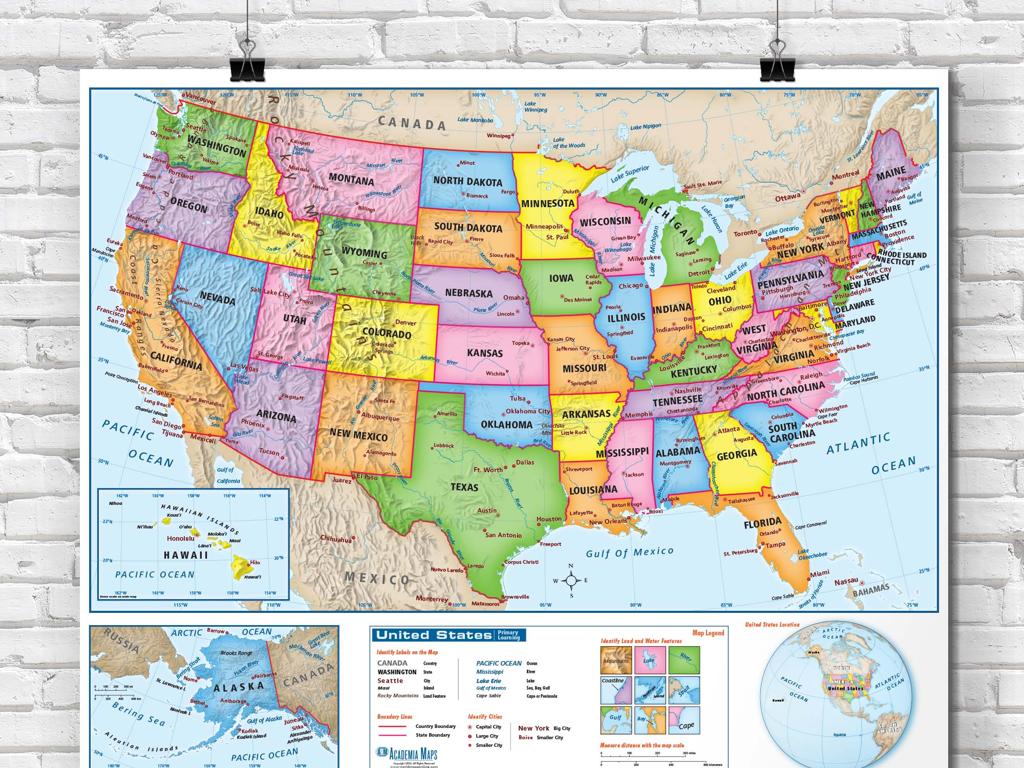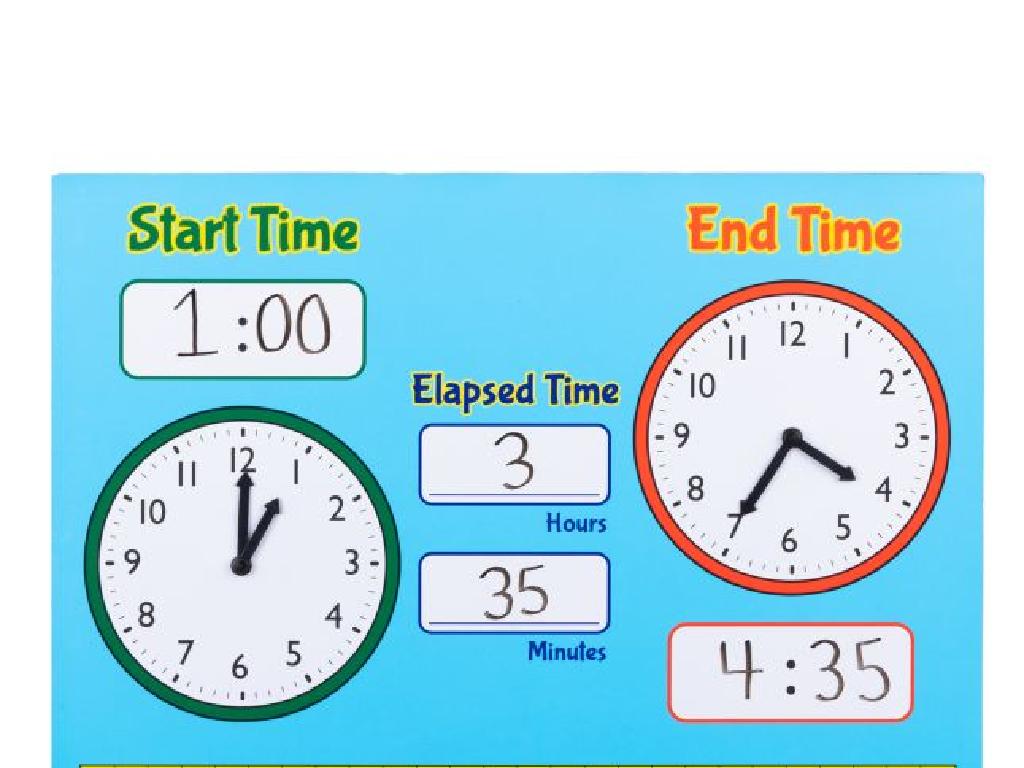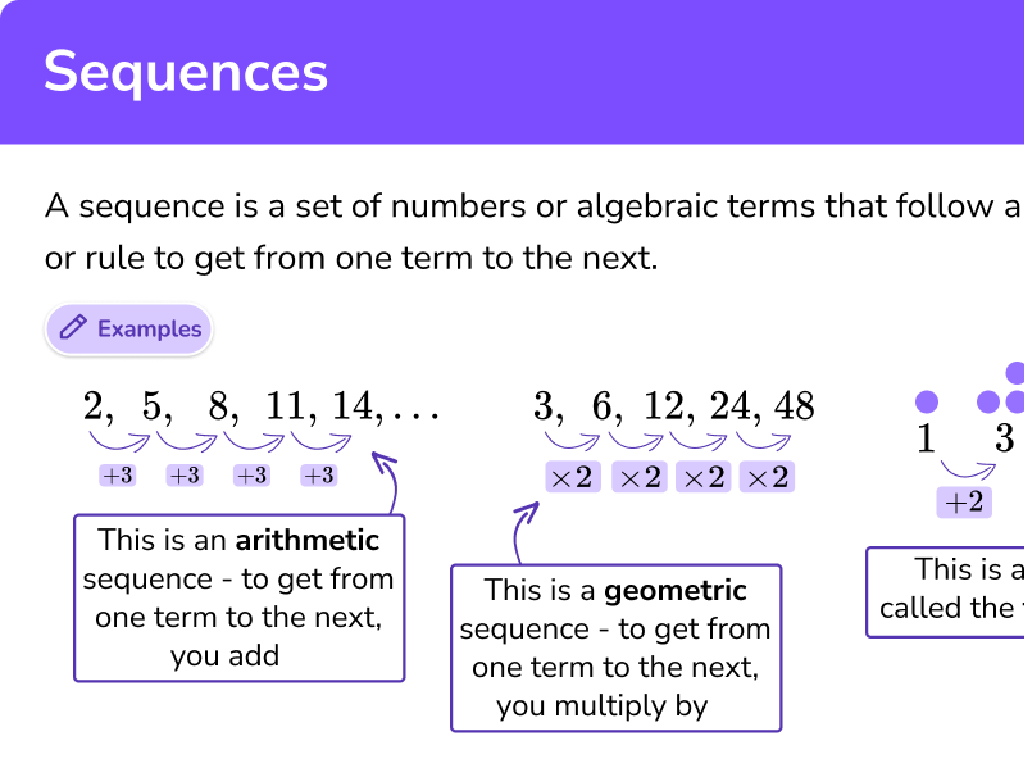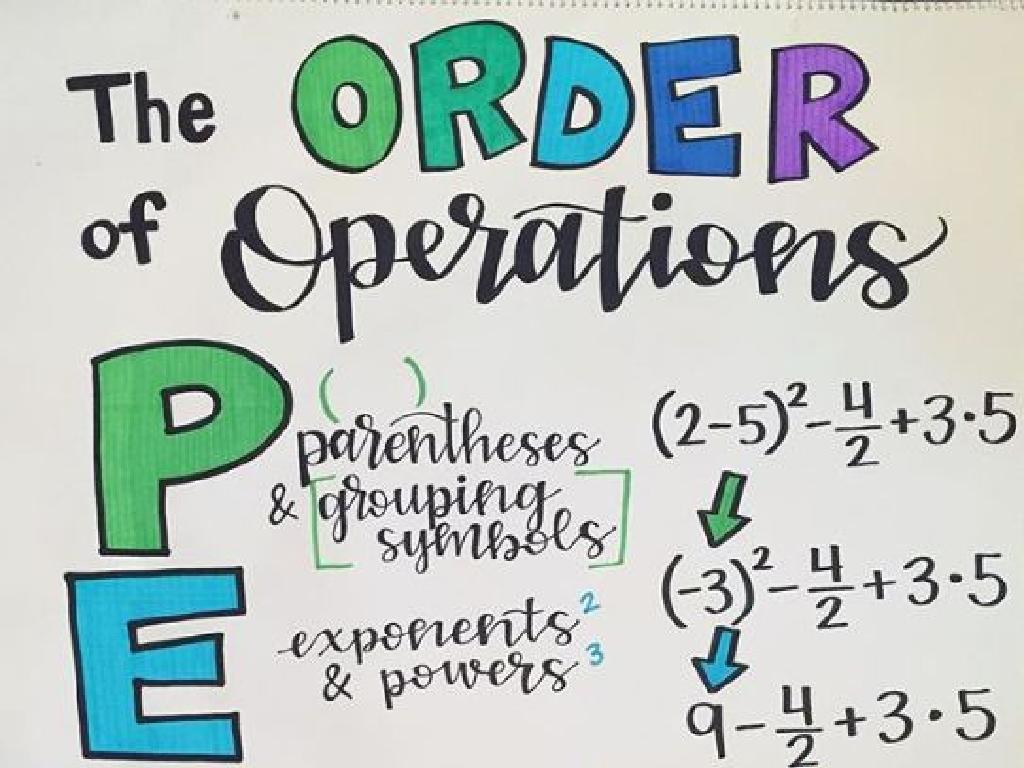Compare Decimals And Fractions
Subject: Math
Grade: Fourth grade
Topic: Decimals
Please LOG IN to download the presentation. Access is available to registered users only.
View More Content
Comparing Decimals and Fractions
– Decimals & fractions represent numbers
– Decimals use points, fractions use slashes
– Both forms are part of our number system
– 0.5 is the same as 1/2, they are everywhere!
– Comparing decimals and fractions
– Which is greater: 0.75 or 3/4?
– Why it’s a key skill in math
– Helps with math problems & real life situations
|
Today’s lesson will focus on understanding how both decimals and fractions are used to represent numbers. We’ll explore the similarities and differences between the two, such as how decimals are written with a decimal point and fractions with a numerator and denominator. Students will learn to convert between decimals and fractions and compare their values to determine which is greater or if they are equal. This skill is crucial for solving a wide range of math problems and is also applicable in various real-life scenarios, such as measuring ingredients for a recipe or understanding discounts while shopping.
Understanding Decimals
– Decimals represent fractions
– Like fractions, decimals show parts of a whole
– Based on the number 10
– Our number system is decimal, or base 10
– Places right of decimal are fractions
– Example: 0.3 is 3/10, 0.03 is 3/100
– Each place is a power of 10
– Powers of 10: 10^1=10, 10^2=100, and so on
|
This slide introduces the concept of decimals to fourth-grade students. Decimals are another way to express fractions and mixed numbers, and they are particularly useful because our entire number system is based on the number 10, which makes calculations and conversions straightforward. Each place value to the right of the decimal point is a fraction with a denominator that is a power of 10, such as tenths, hundredths, thousandths, etc. It’s crucial to ensure students understand that the further right a digit is, the smaller its value, as it represents a smaller fraction of a whole. Use examples to illustrate this point and help students visualize the concept.
Understanding Fractions and Decimals
– A fraction represents a part
– Think of a pizza cut into equal slices
– Numerator and denominator explained
– Top number is parts we have, bottom is total parts
– Fractions convert to decimals
– Divide the numerator by the denominator
– Comparing fractions with decimals
|
Begin by explaining that a fraction represents a part of a whole, using tangible examples like slices of pizza to illustrate the concept. Clarify the roles of the numerator and denominator, ensuring students understand that the numerator indicates how many parts are being considered, while the denominator represents the total number of equal parts in the whole. Teach them how to convert fractions into decimals by dividing the numerator by the denominator, and provide practice problems for them to try. Finally, demonstrate how to compare fractions and decimals by converting fractions to decimals and then comparing the decimal values. Encourage students to use this method to compare which of two fractions is larger or if they are equal.
Comparing Decimals and Fractions
– Convert to same form to compare
– Divide numerator by denominator
– For example, 3/4 becomes 0.75
– Change decimals to fractions
– Example: 0.5 becomes 1/2
– Simplify fractions for ease
– Simplify 2/4 to 1/2
|
When comparing decimals and fractions, it’s essential to convert them to the same form to see which is larger or smaller. Teach students how to convert fractions to decimals by dividing the numerator (top number) by the denominator (bottom number). For instance, 3 divided by 4 equals 0.75. Conversely, converting decimals to fractions helps in some comparisons. For example, 0.5 is the same as 1/2 when converted to a fraction. Remind students that simplifying fractions, like changing 2/4 to 1/2, can make comparisons easier. Use visual aids and practice problems to reinforce these concepts.
Let’s Practice Converting!
– Convert 0.75 to a fraction
– 0.75 is the same as 75/100, which simplifies to 3/4
– Convert 3/4 to a decimal
– To convert 3/4, divide 3 by 4 to get 0.75
– Both represent the same value
– Understanding equivalence
– Knowing this helps compare different forms
|
This slide is aimed at helping students understand the relationship between decimals and fractions. Start by demonstrating how to convert the decimal 0.75 into a fraction by thinking of it as 75 cents, which is like 75/100 dollars, and then simplifying it to 3/4. Next, show how to convert the fraction 3/4 into a decimal by dividing the numerator by the denominator. Emphasize that both the decimal and the fraction represent the same amount, which is a crucial concept in understanding equivalence. This understanding is fundamental in comparing and working with different numerical representations in math. Encourage students to practice with more examples and to check their understanding by converting between decimals and fractions.
Using Benchmarks to Compare Decimals and Fractions
– Understand benchmarks in comparison
– Benchmarks are standard numbers used for comparison
– Start with 0, 0.5, and 1 as benchmarks
– These benchmarks help simplify the comparison process
– Compare numbers to benchmarks
– Decide if the number is smaller, larger, or equal to the benchmark
– Determine the relationship to benchmarks
|
This slide introduces the concept of using benchmarks to compare decimals and fractions. Benchmarks are familiar numbers that we use as reference points. Starting with 0, 0.5, and 1 is effective because these numbers are easy for students to understand and are common in comparisons. When comparing a decimal or fraction, ask if it is less than, equal to, or greater than the benchmark. This method simplifies the process and helps students make quick and accurate comparisons. Encourage students to practice by picking random decimals and fractions and using benchmarks to determine their relative sizes.
Comparing Decimals and Fractions on Number Lines
– Place values on a number line
– Compare positions to determine size
– Example: 0.3 vs 1/3
– 0.3 is just left of 1/3 on the number line
– Example: 0.25 vs 1/4
– 0.25 is equal to 1/4 on the number line
|
This slide is aimed at helping students visualize and compare the sizes of decimals and fractions using a number line. Begin by explaining how to place both decimals and fractions on the number line, ensuring that students understand that each point on the line represents a specific value. Emphasize that the further to the right a number is, the larger it is. Use the examples provided to show how 0.3 is slightly less than 1/3 when placed on the number line, while 0.25 and 1/4 are at the exact same point, indicating they are equal. Encourage students to draw their own number lines and practice placing different decimals and fractions on them to see which are larger or smaller.
Class Activity: Fraction and Decimal Match
– Match fractions to equivalent decimals
– Use conversion skills for pairing
– Convert fractions by dividing the numerator by the denominator
– Work in groups for collaboration
– Discuss findings with classmates
– Share how you found each match with your group
|
This activity is designed to reinforce the students’ understanding of the relationship between fractions and decimals. Divide the class into small groups and provide each group with a set of fraction and decimal cards. Students will use their conversion skills to match each fraction with its equivalent decimal. This exercise encourages teamwork and allows students to discuss their strategies and reasoning with peers. As a teacher, circulate around the room to guide discussions and assist groups as needed. Possible variations of the activity could include timed matches, competitive games between groups, or having students create their own fraction and decimal pairs for others to match.
Conclusion: Decimals and Fractions
– Recap: Converting decimals to fractions
– Review steps to change decimals like 0.75 into fractions like 3/4
– Understand the importance of comparison
– Comparing helps in everyday decisions like finding best buys
– Open floor for questions
– Clarify any doubts
|
As we wrap up today’s lesson, we’ll revisit the process of converting decimals to fractions and vice versa. Emphasize the practicality of these skills in real-life situations, such as understanding money or measuring ingredients in cooking. Encourage students to ask questions about any part of the lesson they found challenging. Offer additional examples or reiterate previous explanations if necessary. The goal is to ensure that all students leave the class with a clear understanding of how to compare decimals and fractions and why this skill is valuable.
Homework: Decimals and Fractions
– Complete the comparison worksheet
– Finish the worksheet on how to compare decimals and fractions.
– Practice converting fractions and decimals
– Try changing fractions like 1/2 into decimals, and vice versa at home.
– Get ready for a quiz next class
– Review your notes and practice problems to prepare for the quiz.
|
This homework assignment is designed to reinforce the concepts taught in class about comparing decimals and fractions. The worksheet will provide structured practice, while converting fractions and decimals at home will help students apply what they’ve learned in a more unstructured setting. Encourage students to use number lines or draw models if they’re struggling with conversion. Remind them that understanding these concepts is crucial for their upcoming quiz, and they should take this preparation seriously. Offer some tips for studying, such as working in a quiet space, checking their work with a calculator, and asking for help if they need it.






